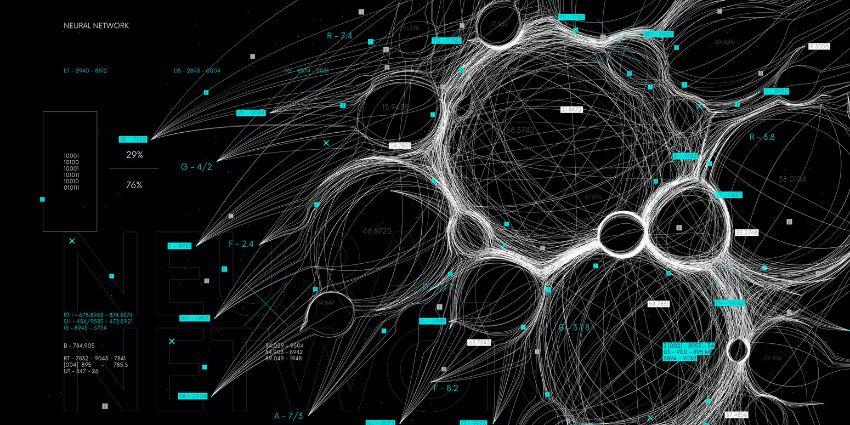What is a Neural Network? Sophisticated Datasets and Data Models to Power the New Reality


As virtual reality (VR) worlds become more authentic, massive datasets are needed to develop environments, objects, and simulated actions to boost realism and immersion. One technology that can facilitate this is a neural network: an artificial intelligence (AI) model that replicates human perception and tasks.
Understanding What is a Neural Network
Neural networks are a subset of machine learning (ML) and are commonly known as artificial neural networks (ANNs) or simulated neural networks (SNNs) central to deep learning algorithms. Their naming and architecture are derived from the human brain, emulating how organic neurons communicate with one another.
In 1943, Warren McCulloch and Walter Pitts created the first neural network after writing a groundbreaking study on how neurons function, and later tested their theories with electrical circuits to develop a simple neural network. The first genuine, multilayered neural network was created in 1975 by Kunihiko Fukushima, a pioneer in AI research.
The initial objective of neural networks was to develop a computing system to handle problems in the same manner as the human brain. However, as time passed, researchers switched their attention from a purely biological approach to employing neural networks to suit specialized tasks. Since then, neural networks have assisted with a variety of tasks, including computer vision, machine translation, speech recognition, social network screening, and clinical diagnosis.
How Does a Neural Network Work?
According to research, the node layers of artificial neural networks (ANNs) consist of an input layer, one or more hidden layers, as well as an output layer.
A node resembles a neuron in the human brain. Like neurons, nodes are triggered when adequate stimuli or input is received. Network-wide activation produces a reaction to a stimulus. The links between such artificial neurons function as basic synapses, allowing for the transmission of impulses between them. Signals traverse layers as they go from the initial input layer to the final output layer, undergoing processing along the way.
When presented with a query or issue to solve, neurons conduct mathematical computations to determine whether there is sufficient information to transmit to the next neuron. In other words, they briefly examine all the data to see where the strongest links are. In a basic network, data inputs are added together, and if the total exceeds a threshold value, the neuron “fires” and activates the neurons to which it is connected.
Deep neural networks are generated when the hidden layers inside a neural network grow. Data scientists may also create their own deep learning networks capable of activities such as voice recognition, picture identification, and prediction. Neural networks also enable a computer to self-learn by identifying patterns in the processing layers.
Types of Neural Networks and their Functionality
The various configurations of neural networks result in the following classifications:
1. Feed forward network
Feed Forward (FF) networks are composed of several neurons and hidden layers that are interconnected. These are referred to as “feed-forward” because data only travels forward, without any backward propagation. In classification tasks, FF networks are employed.
2. Perceptron
Perceptrons are the most fundamental and oldest type of neural network. It comprises a single neuron that applies an actioning function to the input to create a binary output. It has no hidden layers and is exclusively applicable for binary classification tasks.
3. Radial basis networks
Radial basis networks (RBN) have an input layer, a layer containing radial basis function (RBF) neurons, as well as an output layer. RBF neurons record the actual categories for every occurrence of training data. Using a Radial Function as the activation function distinguishes the RBN from the conventional Multilayer perceptron. RBNs are mostly employed in applications involving function approximation, such as power restoration systems.
4. Multi-layer perceptron
The primary deficiency of feed-forward networks was their inability to learn via backpropagation. Multiple hidden tiers and activation functions are incorporated into multi-layer perceptrons, which are neural networks. They are bidirectional, with inputs propagating forward and weight changes propagating backward. They are utilized in applications based on deep learning.
5. Convolutional neural networks
The most used neural networks for image categorization are convolution neural networks (CNN). CNN has numerous convolution layers that are essential for the identification of key picture characteristics. Prior layers look after low-level details, whereas subsequent layers are responsible for higher-level characteristics.
6. Recurrent neural networks (RNNs)
RNNs are useful for making forecasts using sequential data. Sequential data may consist of a series of pictures, text, and so on. The only difference is that the layers additionally receive a time-delayed feed of the prior instance’s forecast, and predictions are maintained in the RNN unit.
7. Long short-term memory networks (LSTM)
LSTM uses gates to specify whether the output should be processed or ignored. It includes three gates: Input, Output, and Forget. The Input gate determines which data should be stored in memory. The Output gate regulates the data provided to the subsequent layer, while the Forget gate determines when unnecessary data is discarded. Multiple applications use LSTMs, including gesture detection, audio identification, and Text predictions.
Neural Networks and Virtual Reality: A Key Synergy
Neural networks are theoretically virtual reality-generating systems. Their performance is dependent on the data set being used to prep/tutor the neural network and determine its behaviors, known as the training set. Once taught, the training set maintains the connection between the actual and virtual worlds. The ultimate objective is for neural networks to develop models that are almost identical to physical reality.
A good example is Ego4D by Facebook (now Meta Platforms Inc.), a neural network to develop AI that can analyze what it is like to move through virtual reality worlds from a first-person perspective. The idea is that the data set will propel researchers to develop neural nets that excel at performing tasks from a first-person perspective, eventually powering smart AI assistants and digital humans that will populate the metaverse along with real, human users.
https://technosoundz.com/feed/
TechnoSoundz
https://technosoundz.com/blockchain/what-is-a-neural-network-sophisticated-datasets-and-data-models-to-power-the-new-reality/




